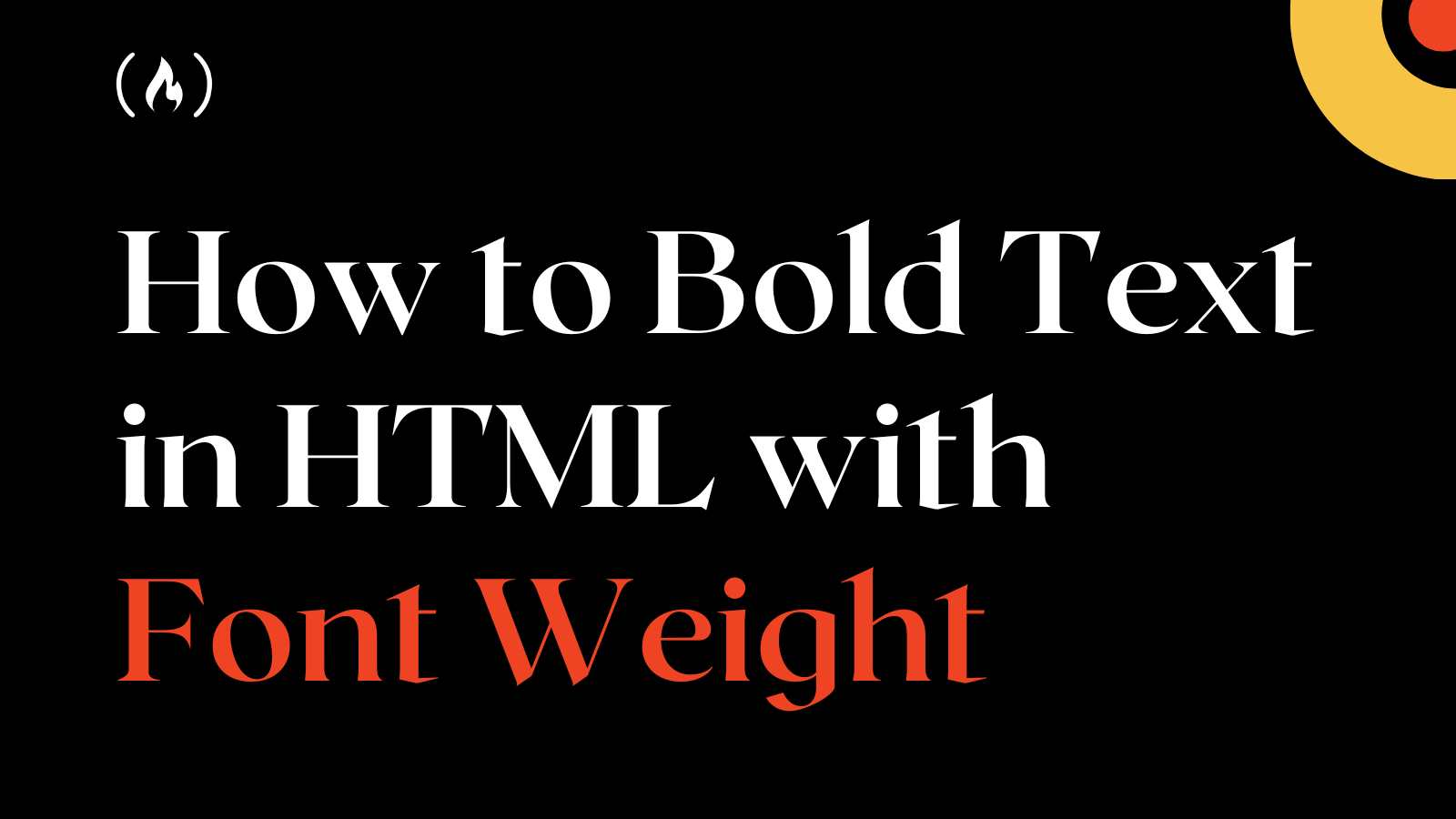CSS is a powerful tool for web developers. It allows you to style and format HTML content in various ways.
One common formatting technique is to make text bold using the font-weight property. Bold text can add emphasis to key information, create visual contrast, and improve the readability of content.
In this article, you will learn how to use CSS to make text bold in HTML using the font-weight property. Whether you're a beginner or an experienced developer, this article will provide a comprehensive guide to creating bold text in your HTML content using CSS.
Understanding Font-Weight Property
The font-weight property is a CSS property used to define the weight or thickness of a font. It determines the text's degree of boldness or lightness, with higher values indicating a bolder font-weight.
The font-weight property accepts various values, including numeric and keyword values.
Numeric values range from 100 to 900, with increments of 100. A value of 400 is considered normal, while a 700 is considered bold. Some commonly used keyword values include bold, bolder, lighter, and normal.
How to Create Bold Text with CSS
Creating bold text in HTML using CSS is a straightforward process that can be achieved in several ways. You can choose to use any form of styling, such as inline, internal or external.
How to Create Bold Text with Inline styling
You can use inline styling to apply the font-weight property directly to a specific HTML element, like this:
<p style="font-weight: bold;">This is a bold text</p>
However, inline styling can make your HTML code cluttered and difficult to maintain, especially when many elements require the same styles.
How to Create Bold Text with Internal styling
Internal styling allows you to apply CSS styles within the head section of an HTML document using the style tag, like this:
<head>
<style>
p {
font-weight: bold;
}
</style>
</head>
<body>
<p>This is a bold text</p>
</body>
This method is useful when applying the same styles to multiple elements on a single page.
How to Create Bold Text with External styling
External styling involves creating a separate CSS file and linking it to your HTML document using the link tag, like this:
<head>
<link rel="stylesheet" type="text/css" href="styles.css">
</head>
The CSS file can contain the styles for all the HTML elements on your website, and you can easily make changes to the styles without modifying the HTML code.
p {
font-weight: bold;
}
Best Practices for Using Bold Text in HTML
While using bold text in HTML can help emphasize important information, it is essential to follow best practices to ensure the text remains readable and accessible.
Here are some best practices for using bold text in HTML:
Choosing the right font-weight: When using bold text, it is essential to choose the right font-weight to ensure the text is clear and easy to read.
While a heavier font-weight may be suitable for headlines, a lighter weight may be more appropriate for body text. It is also important to ensure that the bold text is not too overwhelming and does not detract from other elements on the page.
Balancing bold text with other formatting options: While bold text can be a powerful way to draw attention to important information, it is important to balance it with other formatting options to create visual hierarchy.
You can use other styles such as italics, underline, or a different font size or color to distinguish different levels of importance.
Avoiding overuse of bold text: Overusing bold text can make the text harder to read and detract from the page's overall design.
It is important to use bold text sparingly and only where it is necessary to emphasize important information. Avoid using bold text for entire paragraphs or blocks of text, as this can make it difficult for readers to distinguish important information from regular text.
Testing for accessibility: When using bold text, it is essential to ensure it is accessible to all users, including those with visual impairments.
Screen readers can have difficulty reading heavily styled text, so it is important to test the page using accessibility tools to ensure the bold text is properly formatted and accessible.
Conclusion
In conclusion, using bold text in HTML can effectively emphasize important information and create visual hierarchy.
By choosing the right font-weight, balancing bold text with other formatting options, avoiding overuse, and testing for accessibility, you can ensure that the bold text remains readable and accessible to all users.
Thanks for reading and have fun coding!
Embark on a journey of learning! Browse 200+ expert articles on web development. Check out my blog for more captivating content from me.

